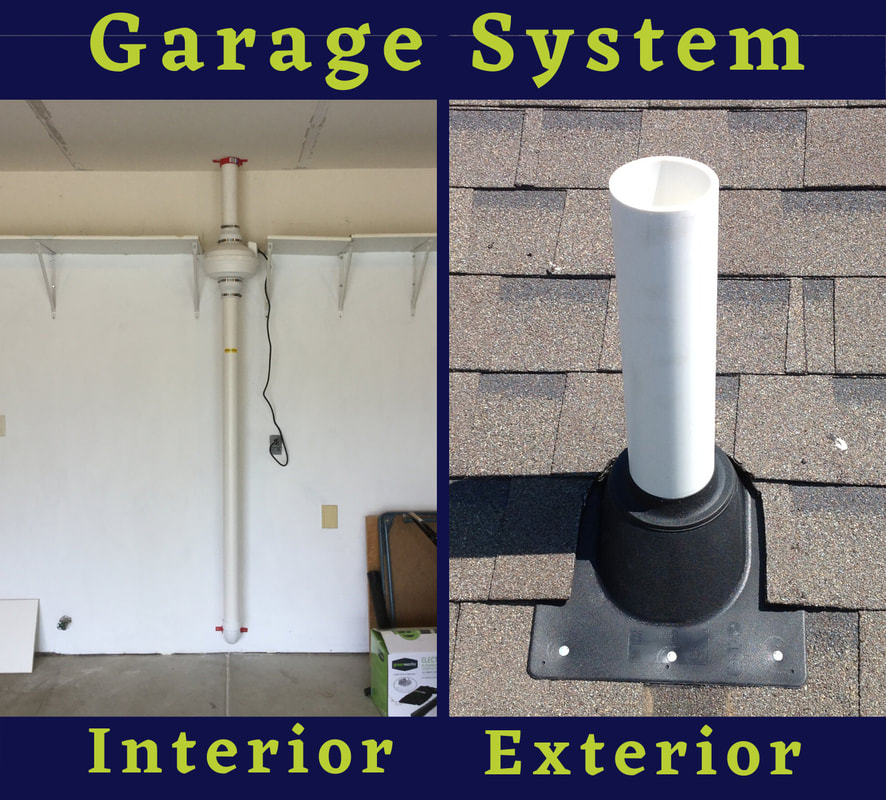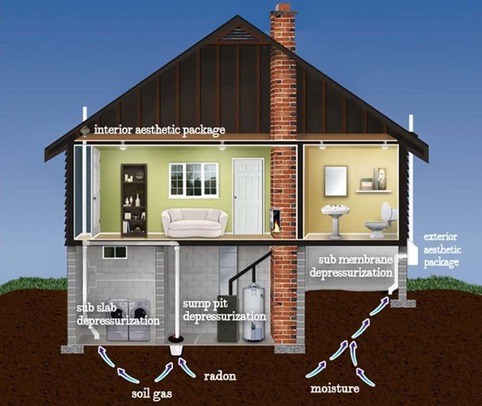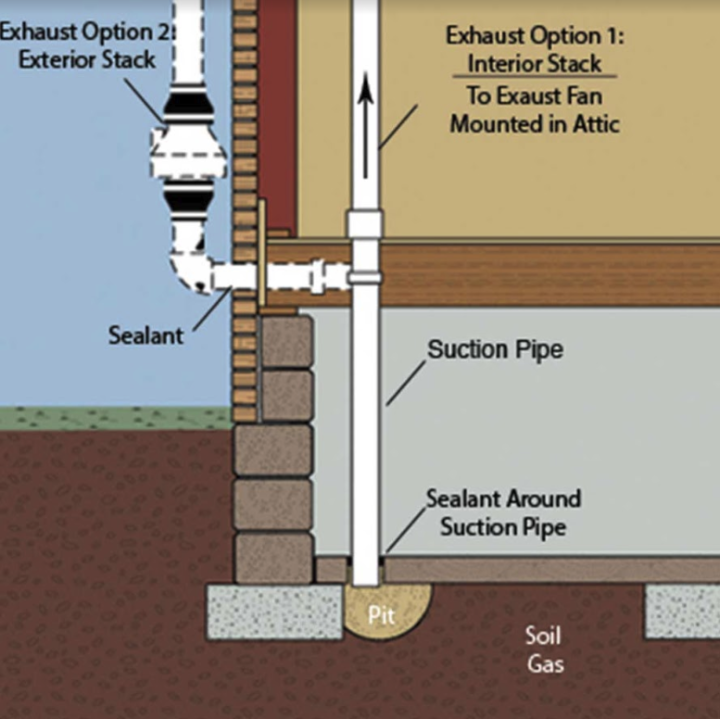Consumer's Guide to Radon Reduction - US EPA


Nashville Radon Mitigation & Testing Services - Radon 1 ©
What Does Radon Mitigation: Radon Abatement & Remediation Services Mean?
Any procedure used to minimize radon gas concentrations in the breathing zones of occupied structures, or radon from water materials Radon mitigation is any process used to minimize radon gas concentrations in the breathing zones of occupied structures, or radon from water products. Radon is a considerable factor to ecological radioactivity. Mitigation of radon in the air is achieved through ventilation, either collected below a concrete floor piece or a membrane on the ground, or by increasing the air changes per hour in the structure. Treatment systems utilizing aeration or activated charcoal are available to eliminate radon from domestic water materials.


New Construction Passive Radon Mitigation - American Radon, LLC
Variation of ambient air radon concentration over one week, determined in a lab The initial step in mitigation is testing to see if the indoor-air and/or domestic water radon concentrations ought to be reduced. Check For Updates of radiation is thought about totally safe, however it can not be completely eliminated so federal governments around the world have actually set different action levels to offer guidance on when radon concentrations should be minimized. The World Health Company's International Radon Task has actually recommended an action level of 100 Bq/m3 (2. 7 p, Ci/ l) for radon in the air. Radon in the air is considered to be a bigger health threat than radon in domestic water so the US Environmental Security Company suggestion is to not evaluate for radon in water unless a radon in air test is above the action level.

Radon Mitigation System - EH: Minnesota Department of Health
The United States government has not set an action level for radon in water. Air-radon levels change naturally on an everyday and seasonal basis. A short-term test (90 days or less) might not be an accurate assessment of a home's typical radon level, however are recommended for preliminary screening to quickly identify unhealthy conditions. Transient weather such as wind and modifications in barometric pressure can impact short-term concentrations in addition to ventilation such as open windows and the operation of exhaust fans. Testing for radon in the air is achieved using passive or active devices placed in the structure. Some gadgets are promptly sent to a lab for analysis, others calculate the outcomes on-site.
